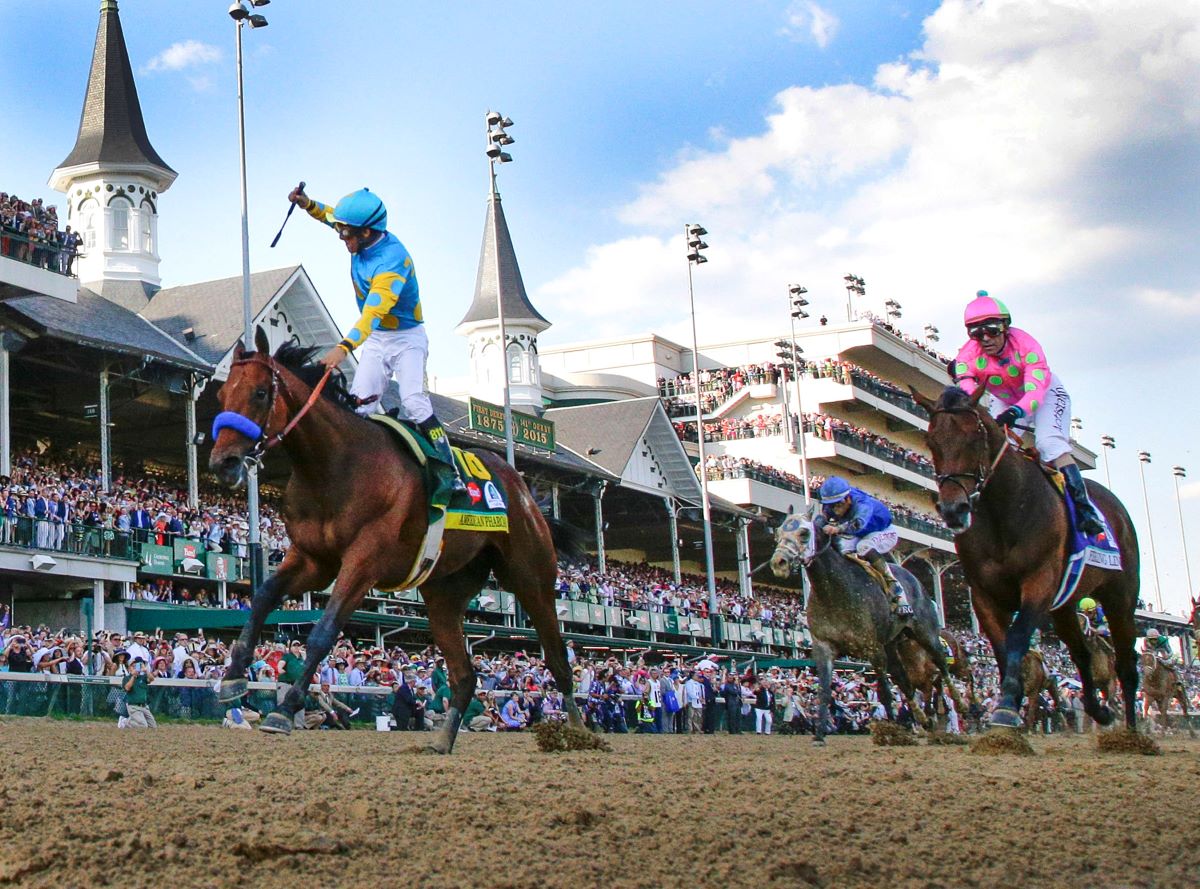Even with tracks emerging from coronavirus shutdowns throughout May, Thoroughbred racing handles for the month plummeted compared to their 2019 totals, according to Equibase’s monthly report on horse racing’s economic indicators.

The biggest individual culprit for May’s decline was easy to pinpoint: no Kentucky Derby and no Preakness Stakes. The Kentucky Derby and its undercard is one of the biggest betting days on the American racing calendar. Bettors wagered $165.5 million on the 2019 Derby and nearly $251 million on Churchill Downs’ Derby Day card. Another $60.2 million went down on the Kentucky Oaks, run the day before the Derby. On the 2019 Preakness, bettors put down $99.9 million.
That’s $411 million cut out of May’s handle, which goes a long way in explaining the 30.16% drop in May wagering compared to last year.
The Kentucky Derby moved from the first Saturday in May to Sept. 5. The Preakness moved from May 16 to Oct. 2.
Thoroughbred Racing Economic Indicators-May 2020
| Indicator | May 2020 | May 2019 | % Change |
| Wagering on US Races | $908,504,654 | $1,300,923,869 | -30.16% |
| US Purses | $31,971,002 | $115,776,828 | -72.39% |
| US Race Days | 123 | 450 | -72.67% |
| US Races | 1,059 | 3,650 | -70.99% |
| US Starts | 9,145 | 25,955 | -64.77% |
| Avg. Field Size | 8.64 | 7.11 | +21.44% |
| Avg. Wagering Per Day | $7,386,217 | $2,890,942 | +155.50% |
| Avg. Purses Per Race Day | $259,927 | $257,282 | +1.03% |
Source: Equibase
And again, purses took a massive hit, falling more than 72%, from $115.78 million to $31.9 million. Year to date, purses are down 40.6% — the result of casino and OTB closures and closed-door racing that fund sizable portions of purses. Nearly all pari-mutuel bets placed in May came from advance deposit wagering (ADW) and racetracks see a far smaller percentage of those bets than on-track or OTB wagers.
At the same time, the average purses increased slightly, a tick over 1% per day.
Returning Tracks Make Some Difference
Other indicators suffered equally predictable plunges. Even with Santa Anita Park, Golden Gate Fields and Churchill Downs returning mid-month and Lone Star Park and Laurel Park coming back later in May, horseplayers enjoyed only 123 race days in May. That reflects a 72.67% drop from May 2019. It also reflects extended seasons at Tampa Bay Downs and Fonner Park, neither of which customarily races in May.
That, in turn, also explains the 70.99 plunge in races, from 3,650 in 2019 to 1,059 this May.
All that taken in total, however, represents an improvement over April’s figures. With only five Thoroughbred tracks running in April, race days increased by 45% and races 42%. Total handle increased by 29.6%.
Everyone’s Looking For Value, Action, Opportunities
Not surprisingly, with fewer tracks running, field sizes and average wagering per day are up substantially, as horsemen seek opportunities and bettors seek action wherever it may be. May’s average field size was 8.64, 21% more than May 2019. The average wager per day, meanwhile, rocketed to $7,386,217, a 155.5% jump from May 2019.
Looking forward, June’s numbers will improve on May’s as Belmont Park’s big fields and substantial handle join the party. Last Wednesday, Belmont Park broke a 10-year-old record for opening day handle, drawing $10,972,254 in wagers.
Other tracks that opened or are opening in June include Louisiana Downs, Evangeline Downs, Delaware Park, Emerald Downs, Indiana Grand, Hoosier Park and Mountaineer. Keeneland, Monmouth and Saratoga headline July openings.









